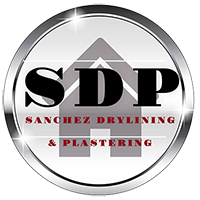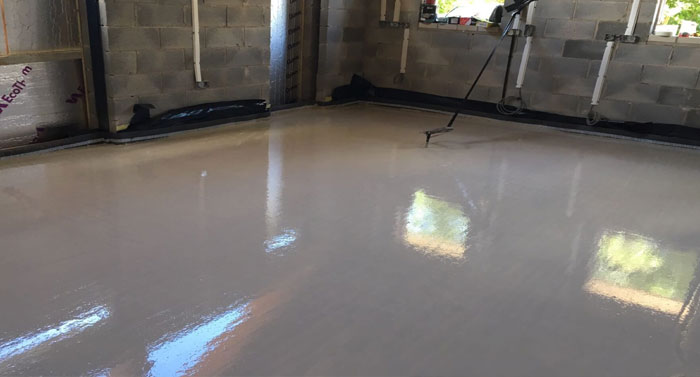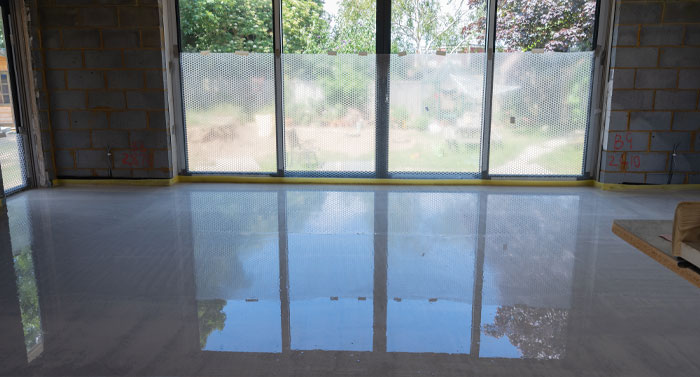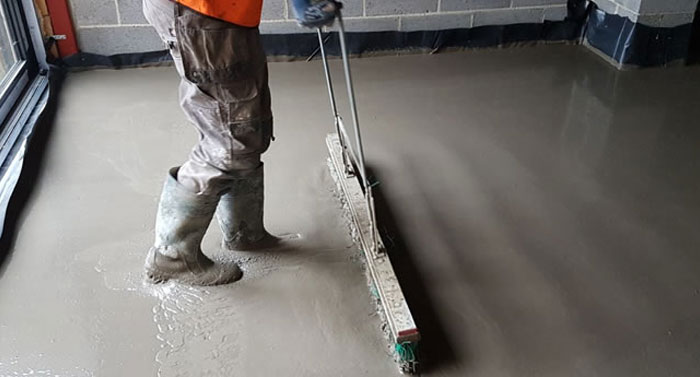A resilient hard, flat, smooth floor surface can be achieved in several ways, the most efficient is screed. Based on sand and cement mix, the slurry is poured onto a layer of insulation, this means the floor is essentially floating and separated from the surface below the insulation.
This type of system has a great impact on noise reduction and the retention of heat.
Floor screed is usually laid on sheets of insulating material, this layer varies from a few millimeters up to 300mm, or more. This prevents cold striking through from the surface below, it also acts to reduce the transfer of noise to the floor below.
Additional insulation is fitted around the perimeter of the room to isolate the screed from the outside walls, this acts as a cold barrier, it prevents the colder walls absorbing the heat from the floor.
Screed is essential when using underfloor heating, the array of pipes is easily covered by the screed and the insulation below ensure that most of the heat remains in the room.
Screed comes in several forms:
- Traditional sand and cement, this is one of the most popular substrates, the addition of fiber particles create a strong resilient floor.
- Lightweight flow screed, less dense than sand, this product is pumped like a liquid and used in thinner applications. This results in less weight on the floor and support structure below.
- Self-leveling screed is a very fine powder and generally used in a very this layer to even out any anomalies in existing floor surfaces.



